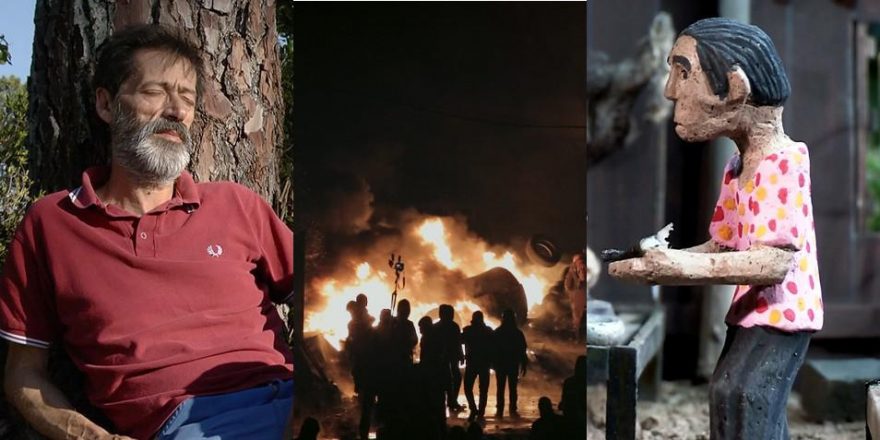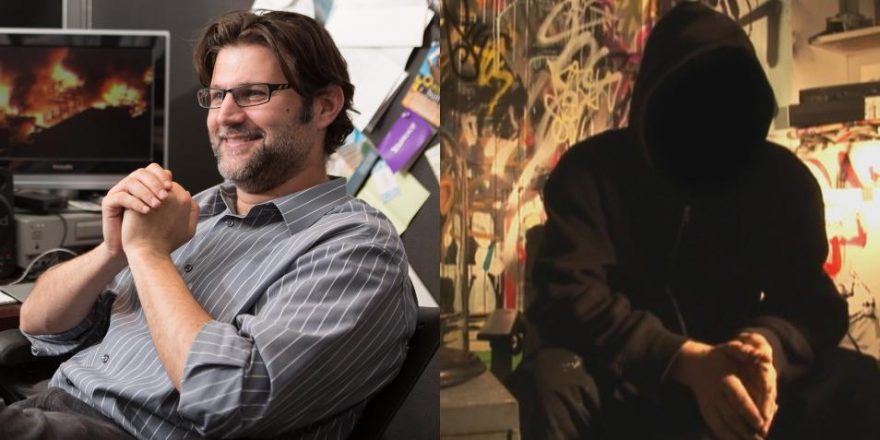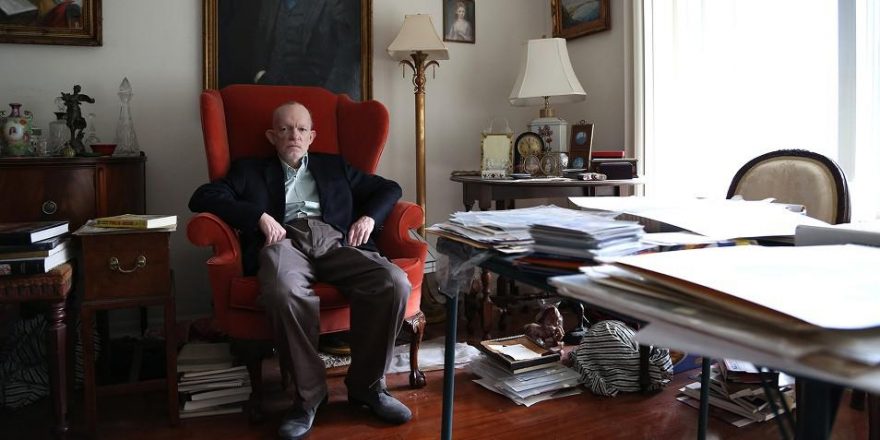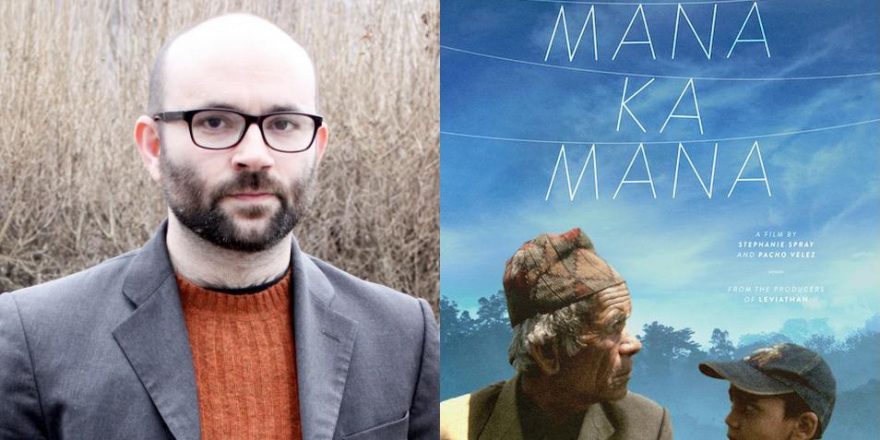For cinephiles, this time of year is always a backwards-looking one, as more and more lists and wrap-ups are released, and the awards that are supposed to tell us what films mattered most start getting announced. The Academy Award nominations, the endgame, are just out, and as a doc filmmaker, the final list of five has gotten me thinking about cinematic nonfiction in 2014.
There are few images from any film I saw in 2014 that will stick with me like the opening of shot of Joaquim Pinto’s What Now? Remind Me. In extreme, macro close-up, we watch a slug trundling through the grass, glistening in the sun. The closeness to the creature makes the shot feel like something captured for use on Planet Earth or Life, but our narrator, Pinto himself, is decidedly more dour than sprightly David Attenborough, and only really interested in tracking the movements of one earthbound creature over the course of his film: himself. No, Pinto is much less interested in sharing some fascinating tidbit about the life of this particular brand of gastropod than in using said mollusk and its movements — slow, painstaking, but always inching gradually forward — for metaphorical heft. What Now? is a collection of slow movements forward; Pinto puts one foot in front of another, trying, hoping, to remember himself from one day to the next.
Pinto’s epic biographical work runs nearly three hours and is framed as a record of a year its creator spent making regular pilgrimages to the hospital to receive an experimental cocktail of drugs meant to keep his combination of HIV and Hepatitis C at bay. The film is a rambling, rangy look at his life in Portugal now — time spent building a farm with his handsome lover Nuno, traveling to festival screenings, answering correspondence, driving through the countryside with his many dogs, listening to pop music and sluggishly trying to surmount the effects of his medications — but it also looks back over his long career as a sound recordist for filmmakers like João César Monteiro, Raúl Ruiz, Manoel de Oliveira and André Téchiné. Pinto incorporates footage from those shoots into a rambling discursive meditation in much the same fashion that Agnès Varda handled her own cinematic history in The Beaches of Agnes, using her films to illustrate her history and vice versa. Pinto narrates his own tale, and his wry, literate, weary voice and digressive tendencies show shades of a continental Ross McElwee. His film, though lengthy, plays as accessible and warm, without ever giving short shrift to the imposing, curious intellect shaping the images.
Similarly imposing, yet just as compulsively watchable was Maidan, Sergei Loznitsa’s record of the Ukrainian uprising that began in November of 2013. Loznitsa is likely best known here, if at all, for his two Cannes-selected narrative films, My Joy and In the Fog, both of which received small stateside releases. Throughout his career, however, he’s done far more work in nonfiction, and his commitment to a formally rigorous brand of storytelling is evident throughout Maidan, which compellingly relates recent historical turmoil without moving its tripod-mounted camera, save for two crucial moments. Those who look to documentary to simply tell them things will find much to be frustrated with here: we never learn the names of the uprising’s leaders; have only the most basic sense of what they’re agitating for; are never given “characters” to follow; and most of the film’s static shots don’t tie in direct narrative ways to the images that precede and follow. Loznitsa isn’t interested in comprehensive reportage; he’s after snapshots of the moment, the sense of what revolution looks and sounds like, the tension in the air of that instant when peaceful protests turn violent. He’s using images to create sensation, empathy — in short, he’s making cinema. He gets bonus points for his speed — this elegant, clearly labored-over work appeared at Cannes mere months after the events it documents transpired, and was in U.S. theaters barely 10 months after shooting was completed.
Rithy Panh’s diary of growing up in Cambodia the early days of the Khmer Rouge, The Missing Picture, was nominated for an Academy Award last year, but for Best Foreign Language Film, instead of Best Documentary. The film is the latest in Panh’s series of attempts to excavate the national and personal Cambodian histories brutally scrubbed out by Pol Pot’s regime. To do this, Panh takes a unique tack: to recreate the atrocities he remembers from his childhood, he uses miniatures, hundreds of them, handcrafted by Cambodian artisan Sarith Mang, placed in dioramas that stand in for performed re-enactments or archival footage. The effect is wholly unsettling — the brightly colored figures and landscapes belie the violence they’ve been molded to depict, and if one weren’t listening to the somber narration, or paying close attention to the actions of the figurines, The Missing Picture could almost pass as a film for children. Panh’s formal conceit is altogether more disquieting than the movie-style recreations of the much-loved The Act of Killing (incidentally, Panh, in 2003, took mass murderers back to the scenes of their crimes for his S-21: The Khmer Rouge Killing Machine), the stillness of the figurines suggesting those contorted figures trapped in ash recovered from the ruins of Pompeii.
These three films, besides being my favorite nonfiction works theatrically released in 2014 (if it were fair to mention those that haven’t yet been seen actual distribution, I’d plug the gloriously entertaining Living Stars, which is nothing more than an hour of static tableaux of Argentines of all stripes dancing to pop music) have all gone wildly under-sung in a documentary year when those who pay close attention to the form were most often debating the merits of Life Itself, CITIZENFOUR, The Overnighters, Actress, Virunga or 20,000 Days on Earth. Audiences didn’t exactly turn out, either. Combined, the total box office receipts for What Now? Remind Me, Maidan and The Missing Picture amount to less than CITIZENFOUR’s take on its first day in release. This is a function of myriad complexities relating to distribution, exhibition, and reception, but I highlight these films here (two of which — Pinto’s and Panh’s — are currently available via Netflix streaming) just to remind people that there are myriad exciting things happening in nonfiction, ready and available for those looking to find them.







